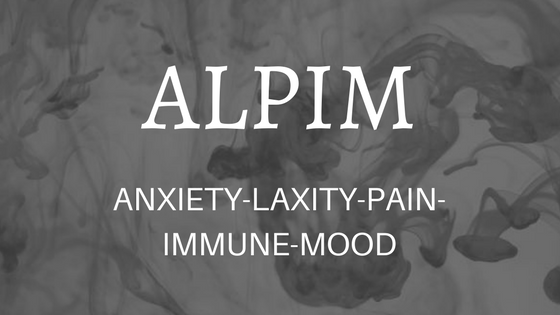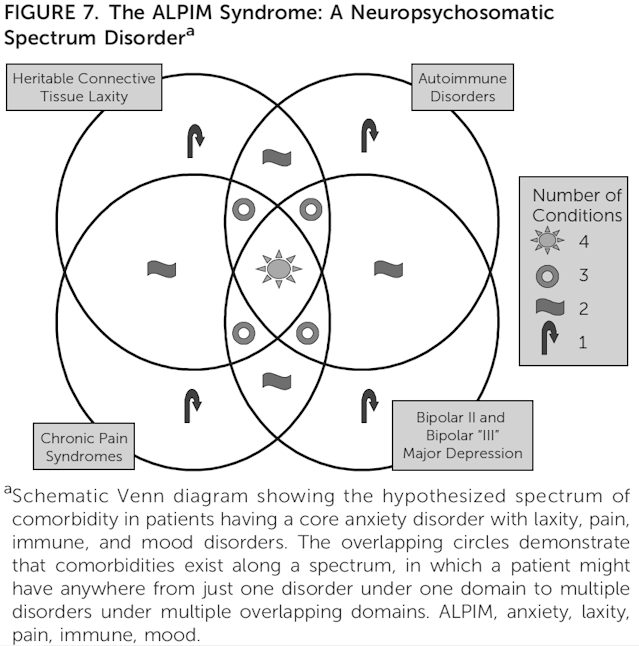
Many of us living with mental illness have other chronic illnesses. Often we are not treated for our “physical” illnesses, as many doctors dismiss them as psychosomatic. “Mental” illnesses ARE “physical” illnesses, and “physical” illnesses affect our “mental” illnesses. We are not just our brains, just our bodies, just our minds, just our feelings, or just our souls. The more we learn, the more we understand interconnectedness and comorbidities.
The ALPIM Spectrum
In the Spring 2015 issue of the Journal of Neuropsychiatry and Clinical Neurosciences, researchers proposed The ALPIM Spectrum:
- A = Anxiety disorder (mostly panic disorder);
- L = Ligamentous laxity (joint hypermobility syndrome, scoliosis, double-jointedness, mitral valve prolapse, easy bruising);
- P = Pain (fibromyalgia, migraine and chronic daily headache, irritable bowel syndrome, prostatitis/cystitis);
- I = Immune disorders (hypothyroidism, asthma, nasal allergies, chronic fatigue syndrome); and
- M = Mood disorders (major depression, Bipolar II and Bipolar III disorder, tachyphylaxis. Two thirds of patients in the study with mood disorder had diagnosable bipolar disorder and most of those patients had lost response to antidepressants).
Study Conclusion
We conclude that patients with ALPIM syndrome possess a probable genetic propensity that underlies a biological diathesis for the development of the spectrum of disorders. Viewing patients as sharing a psychological propensity toward somatizing behavior essentially denies patients access to care for the diagnosable medical conditions with which they present.
– J Neuropsychiatry Clin Neurosci. 2015 Spring;27(2):93-103. doi: 10.1176/appi.neuropsych.14060132
Download the Study
Should you want to read the journal article, I purchased the pdf version: A Novel Anxiety and Affective Spectrum Disorder of Mind and Body—The ALPIM (Anxiety-Laxity-Pain-Immune-Mood) Syndrome: A Preliminary Report (J Neuropsychiatry Clin Neurosci. 2015 Spring;27(2):93-103. doi: 10.1176/appi.neuropsych.14060132). No copyright infringement intended.
Associations in ALPIM Domains

Diagram of Comorbidities


Leave a Reply